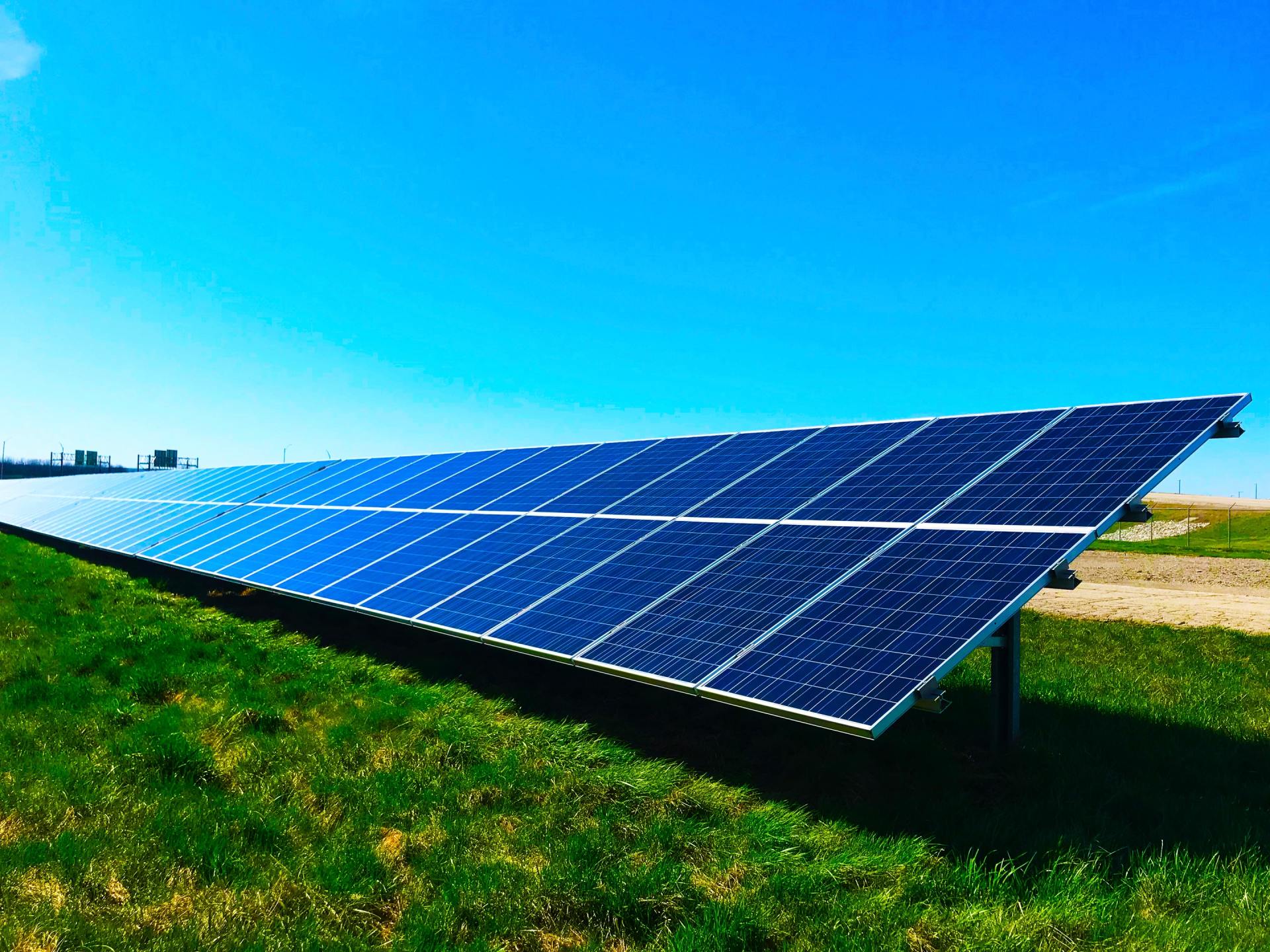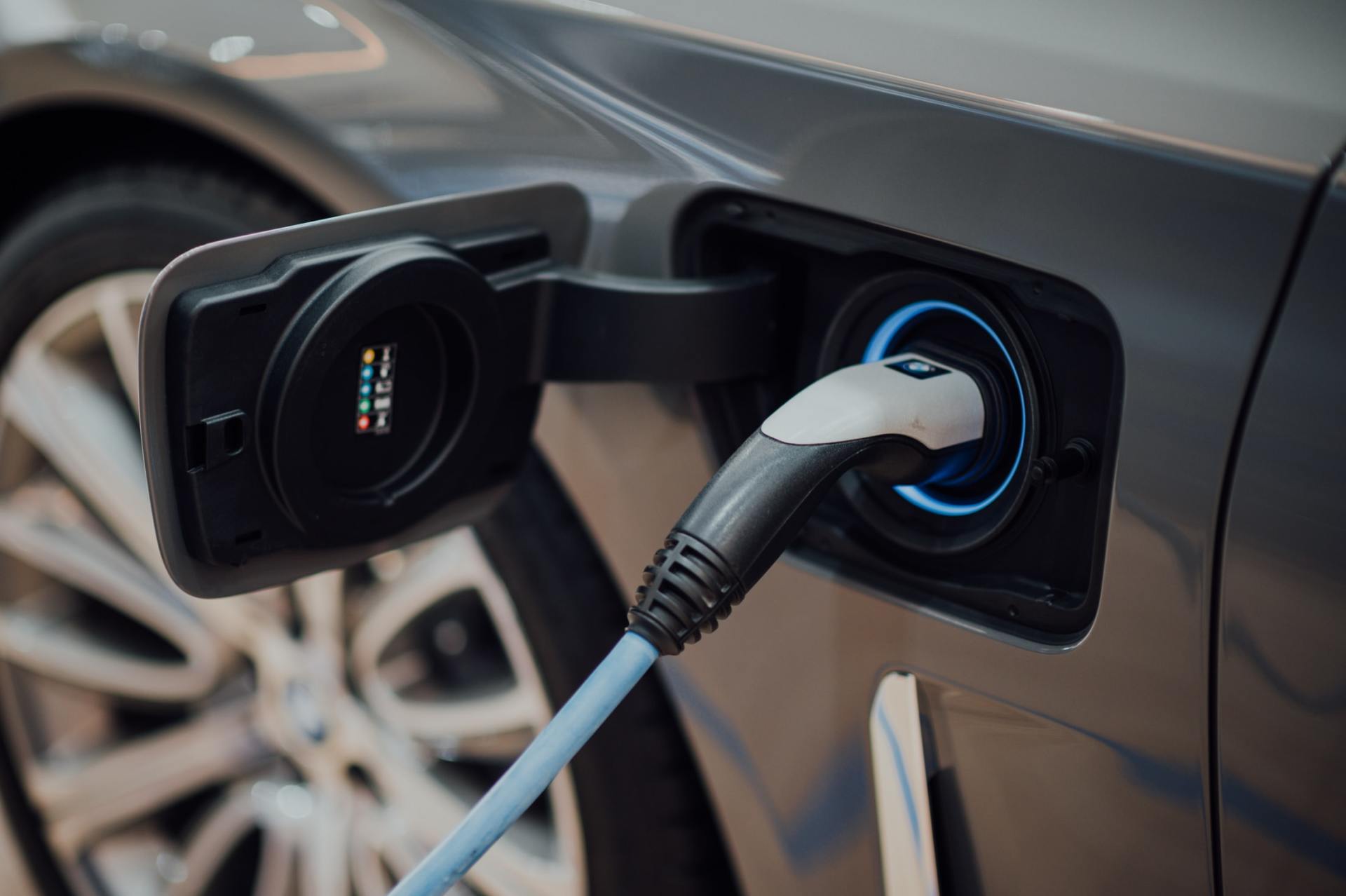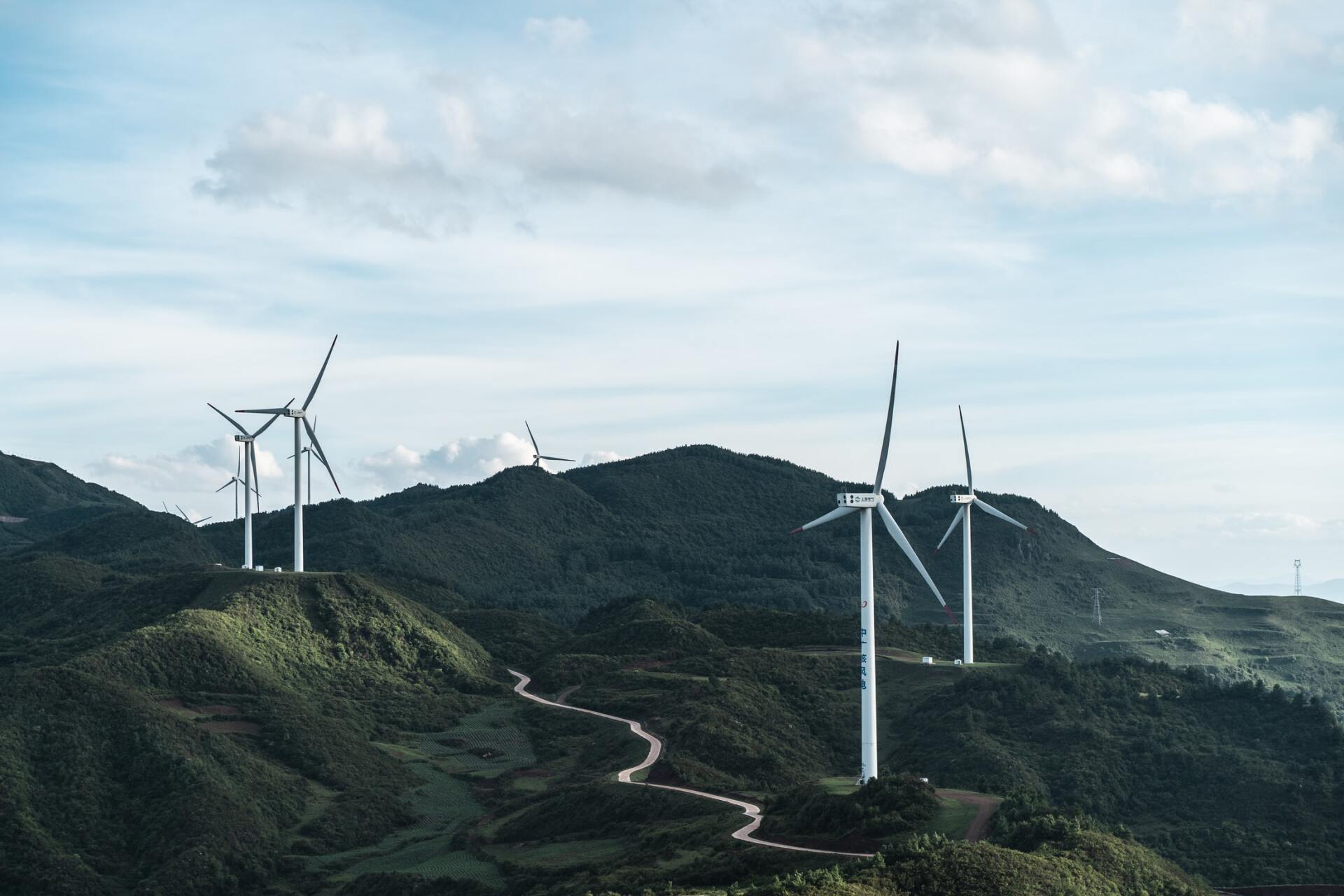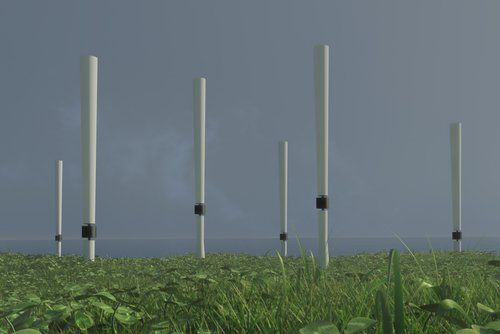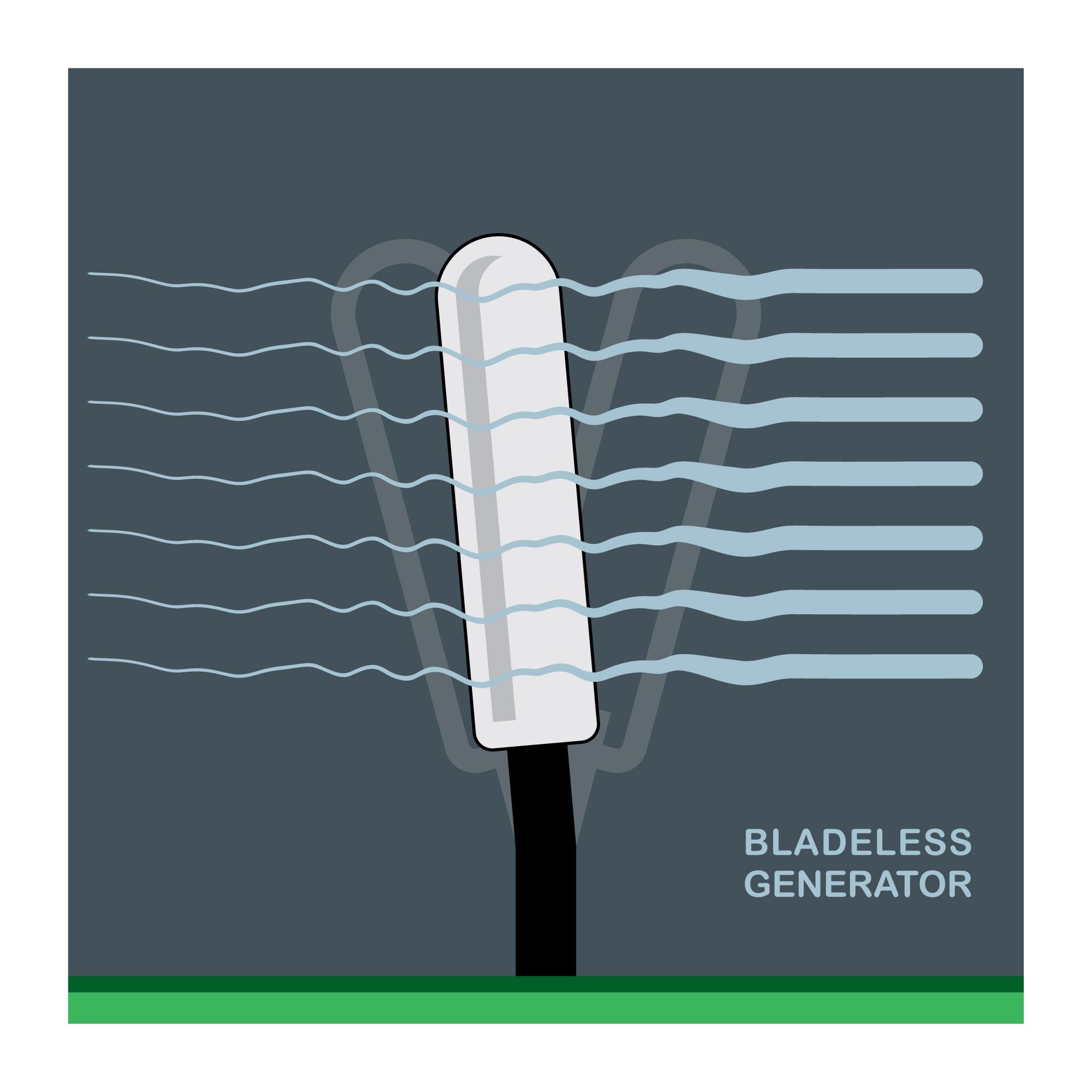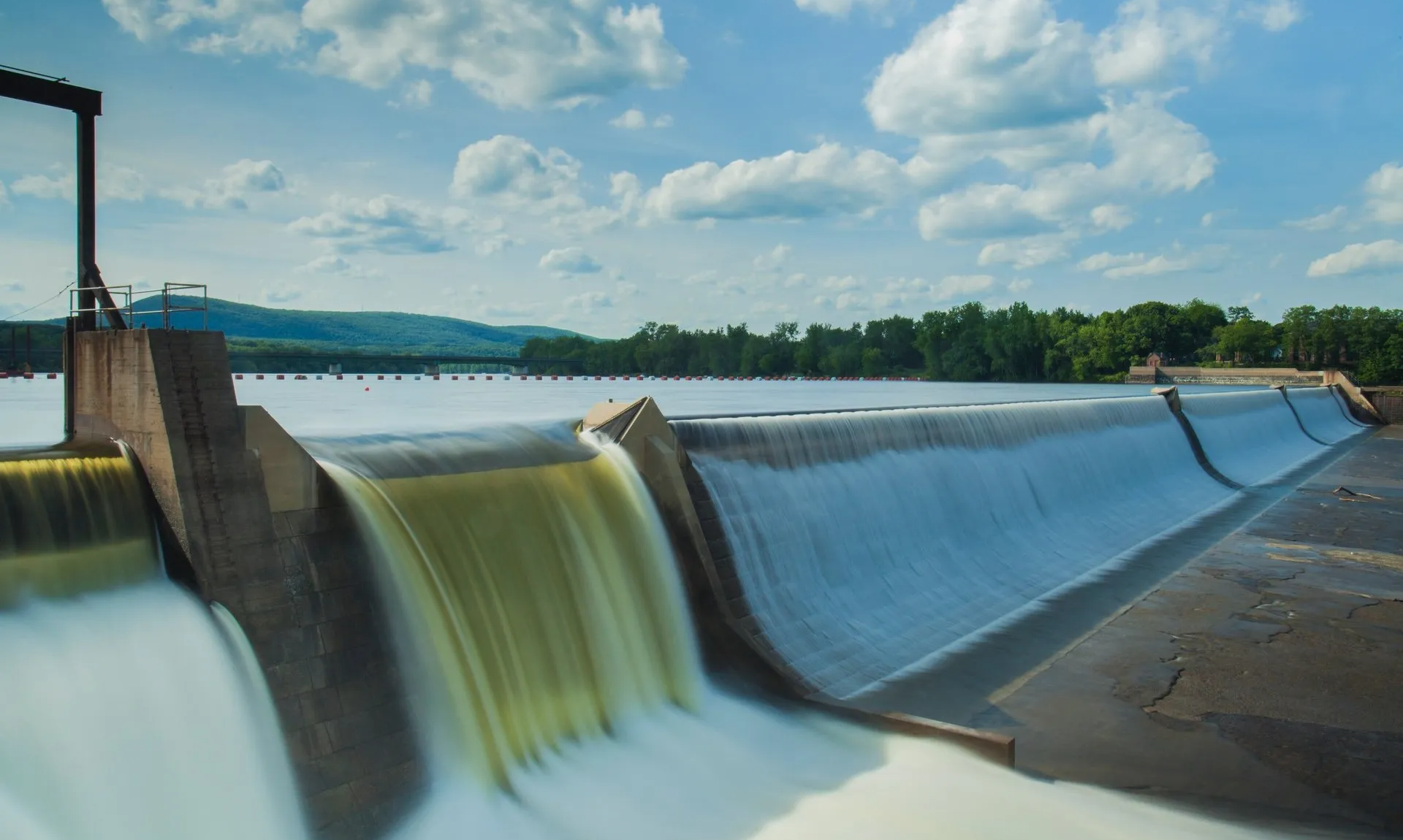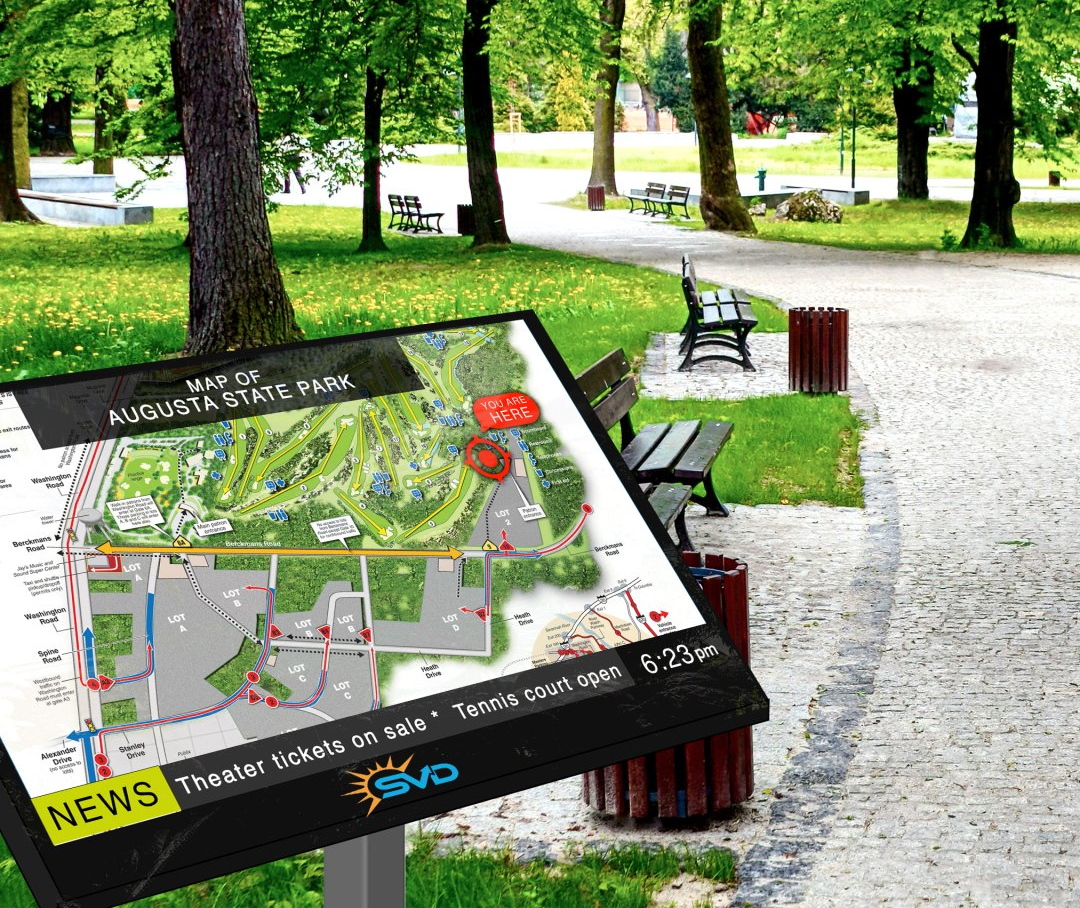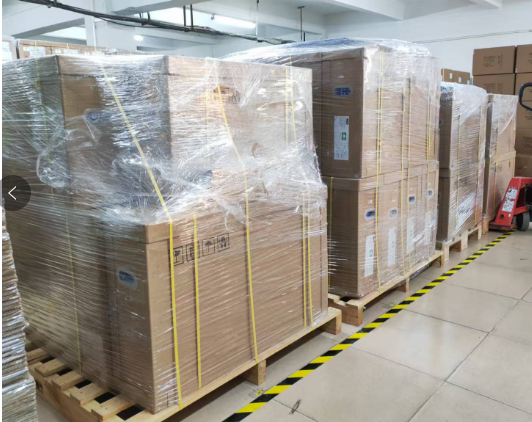5 Eco-Friendly Technologies That are Changing the Game
1. Rapid Roll Solar Mat
While there are many people who believe that solar power still has a ways to go, there’s no denying that it has come a long way. In 1883, the first solar panel was created by Charles Fritts. It was a simple design that used selenium and a thin layer of gold. Its energy conversion rate was roughly 1-2%. These days, it’s not uncommon for modern solar cells to achieve an energy conversion rate of 15-20%, which is about 1000-2000% more efficient than the earliest design. And, this same technology continues to improve year by year.
At the forefront of solar energy innovation is Renovagen – a company dedicated to making practical, cutting-edge solar energy solutions. One of their products, called the “Fast Fold Solar Mat,” is a large fold-up solar mat that is compact enough to fit into a car.
When rolled out, the mat expands to 7 feet by 19 feet. It connects to a power hub which stores the energy. It has ports on it that allow for connection to any machine or appliance that needs powering. This hub, when combined with the solar mat, make a totally off-grid power system is fairly portable and practical for the average consumer – especially those that heavily rely on electricity.
The unit provides 10kWh of energy storage and up to 3kVA AC output. Their product page boasts that “Just one of these systems could provide power for:
- A deployable camp HQ – comms, lighting, computers, or;
- 3,000 liters of seawater purified for drinking, or;
- 800+ smartphone charges, or;
- 200+ cups of tea!”
That’s not all… Renovagen’s technology can be used as a portable EV charging point. Now, electric vehicle owners no longer have to be limited by their proximity to grid charging stations. They can recharge their vehicles anywhere the sun is shining!
While these capabilities are impressive, there is even more that the Rapid Roll can do. It can actually be combined with a small diesel generator to create a “hybrid” system, capable of providing power on a 24/7 year-round basis.
The solar mat and hub together weight about 260 pounds (the hub is about 200 lbs and the mat is about 60 lbs). Granted, this may mean that the solar mat is not a feasible solution for everybody, as that may be a little too much weight for some people to handle on their own. Storage space can also be a concern for smaller vehicles. However, there are plenty of people who can make it work and who are thrilled with what the system allows them to do.
If you’d like to see a product demonstration, here is a VIDEO that demonstrates how it works.
2. Bladeless Wind Turbine
Like solar, wind energy has come a long way as well. Circa 500 AD, the Persians used wind power for their water pumps and grain mills. The first windmill to generate electricity was invented in 1888 by Charles F. Brush in Cleveland, Ohio. This early model had blades made of cedar wood and was capable of generating 12 KW of power.
Over time, the practical usage of windmills was adopted by many farmers and ranchers. In the 1900s, small windmills started popping up on rural properties to generate electricity for distant or otherwise off-grid locations. Nowadays, it’s common to see large windmills peppering the distant fields when you’re driving down a country road.
So, why hasn’t wind technology spread more widely than it has? You’d think that free energy would be a little more popular, right? Especially when we are constantly searching for ways to replace fossil fuels. The truth is that wind technology, despite its proven usefulness, has always been associated with a fair amount of drawbacks, like:
- Intermittence – Windmills are dependent on wind and can only provide energy during the right atmospheric conditions.
- Intrusiveness – Common complaints of windmills are that they are noisy, unsightly, and have adverse environmental effects.
- Costliness – Windmills typically have large upfront (and ongoing) costs. Many of the giant windmills you see (such as the ones pictured below) cost upwards of a million dollars each.
- Transience – Battery life is often an issue. The batteries in these giants (above) have a lifespan of roughly ten years. By the time a windmill has generated enough electricity to pay for itself, a new battery is often needed, adding yet another financial setback.
- Maintenance – Windmills also typically have many moving parts, such as gears and blades that are subject to corrosion, degradation, and wear from resistance. To keep them functioning, it requires continual lubrication and upkeep.
So, while wind technology has come a long way, there is plenty of room for further advancement.
Recently, a company called Vortex has been putting their focus on these advancements. They have made great strides in overcoming some of the mentioned disadvantages of traditional wind turbines. Their model is totally bladeless. It has a “vortex induced vibration resonant” generator which operates without gears or blades and is said to generate more power than a traditional electricity-generating windmill.
It is built using resins that are reinforced with carbon and glass fiber – virtually, the same materials used in traditional windmill blades. Shape wise, bladeless windmills are comparable to a mast, standing erect over a small surface area. Since they are constructed of lightweight materials, the need for deep anchoring is significantly reduced.
The Vortex Bladeless Turbine harnesses energy from the wind via a process called “vortex shedding.” Wind passes through the turbine’s body and is modified, generating a pattern of vortices. When the frequencies of those forces match the structure’s frequency, the body begins to resonate with the wind.
In most engineering, such resonation is avoided as it is considered a destructive force, producing excessive wear and tear. However, with the Vortex Bladeless Turbine, it is quite the opposite. Not only does it rely on aerodynamic instability to capture energy, it lacks components that can be damaged by the friction.
Does it sound expensive? Actually, it’s not. Because, once you eliminate the need for blades, blade maintenance, and giant support mechanisms, you are able to significantly reduce your associated costs. And, make a speedier ROI.
Consider also that traditional windmills require an orientation system to keep them in line with (and facing) the wind. But due to their unique design, Vortex Bladeless Wind Turbines do not need to face any particular direction. They work the same – no matter which way the wind is blowing.
Not only is this design more efficient at capturing wind energy, it is also quieter, more compact, and less intrusive to people and wildlife. It is also totally noiseless, opening new doors for its use in many locations where traditional windmills might not work.
No complex manufacturing process is required either. No lubricating. No super heavy-duty anchoring. No large, unsightly construction that occupies enormous volumes of space. Just wind power that is more efficient and more affordable. To us, it sounds like an innovation worth mentioning.
3. Whirlpool Turbine
Hydropower is another idea that is not necessarily new. Many cultures have recognized the potential for water movement to be harnessed and used for other purposes. In ancient times, cultures such as the Romans and the Chinese found ways to use hydropower in various mill machines and agricultural equipment. Since then, thousands have studied hydropower and attempted to improve upon its efficiency.
In 1849, an engineer named James Francis came up with the Francis Turbine – a basic model with concepts fundamental to most existing turbines today. About 30 years later, the world’s very first hydropower plant was constructed in Appleton, WI.
In the late 1800’s, Hydroelectric plants began popping up elsewhere. By the early nineteen hundreds, hydropower accounted for approximately 25% of electricity generation in the US. By 1980, that amount had nearly tripled. Now, it accounts for nearly 16% of the entire world’s electrical energy production. In the US, it supplies power to state grids in all states but two – Mississippi and Delaware.
Hydropower clearly has some appealing benefits. For one, it is a totally renewable energy source. While fortunes are commonly spent in the drilling and mining of combustible fuels, hydropower uses resources that are already there. Moving water is part of nature. It always has and always will be. And when you use it, it’s not spent in the process of creating energy. It simply returns to its source, unchanged and uncontaminated.
Hydropower can also work regardless of weather conditions. It can keep delivering energy when the wind isn’t blowing, the sun isn’t shining, and even when river levels are low. Thanks to the help of reservoirs that are capable of storing large amounts of water, many hydropower systems are able to keep plenty of water in reserve. This makes hydropower a far more stable source of energy than wind and solar, which are more intermittent and dependent on atmospheric conditions.
Hydropower is also considered to be a cleaner energy source. It doesn’t emit any harmful pollutants into the water or air. While there are some considerations as to the ways it can impact the environment at local levels, hydropower itself does not burn any fuel or release any toxins into the air.
There are, however, a few drawbacks to hydropower. One is that it can be quite costly to construct and maintain. Since water is always moving, there are always objects in the water that can impede their function. Components within the system can break due to normal wear and tear. Having the equipment and personnel to fix them can create some substantial overhead.
Hydroelectric systems can also have negative impacts on local environments. Consider the Hoover dam, for example, which made drastic changes in the geography of its surroundings. While it may have created many benefits for those near it, it has also created new threats for both people and wildlife alike.
Fortunately, some recent efforts have been made to overcome these drawbacks. Turbulent, a company from Belgium, has created a “whirlpool turbine” which is relatively easy to install on most rivers and canals. It is placed alongside waterways. An opening allows river water to enter into the basin, funneling it into a vortex that spins the turbine more efficiently.
The turbine within the system is its only moving part. Fewer moving parts means a longer operating life. And, with the help of a large grate (or screen) to filter out debris from entering the turbine, the system is given added protection.
Moreover, the blades of the turbine are rounded, allowing fish or other small creatures to easily pass through without being harmed. One video on Turbulent’s website demonstrates how fish can swim right through the basin and turbine without incurring any injury.
The system is small in comparison to most other hydroelectric systems, requiring only about five feet in height to properly function. It is also relatively inexpensive and offers a great amount of power output per unit. Turbulent boasts that just one small whirlpool turbine can produce enough electricity to power up to sixty homes – twenty-four hours a day! And, due to the efficiency of its design (and its special monitoring software), the system can provide a speedier ROI than most other hydropower systems.
This amazing innovation can make life better for many people and in many areas worldwide. It takes about a week to install and has a 100-year life expectancy. With fewer expenses, less adverse impacts on the environment, and more efficient hydropower created, we think that the Turbulent Whirlpool Turbine is another eco-friendly technology worth mentioning.
4. Carbon Engineering
Another cutting edge innovation that shows major promise in the global warming fight is a technology by a company called Carbon Engineering. It pulls carbon dioxide directly out of the atmosphere and converts it into useful carbon.
The process begins with a large structure called an air contactor – a component that has similarities to an industrial cooling tower. Air is pulled into it with the help of a large fan, moving it over thin plastic pieces along the way. Those plastic pieces have a layer of non-toxic potassium hydroxide solution on them, which binds with the CO2 molecules in the air. It removes those CO2 molecules and stores them as a carbonate salt in the liquid solution.
The CO2 is then purified, concentrated, and compressed through various chemical processes. After that, it becomes a form of gas that can either be stored or used. The salt from the solution is extracted as pellets and heated in a calciner, releasing the CO2 in gas form. In short, the process takes something harmful (carbon dioxide) out of the atmosphere and turns it into something useful (i.e., carbon). The benefits are manifold – far greater than those of wind power, hydro power, or solar power.
In addition to the benefits we’ve already mentioned, carbon capture and storage is capable of capturing between 50-98% of carbon dioxide. And, according to the IPCC, it could account for 10-55% of the total carbon mitigation effort.
One disadvantage is that there are some significant cost implications associated with carbon dioxide capturing. Approximately 25 tons of water are required for each ton of CO2 stored. And, there are concerns about potential leaking hazards associated with storing captured CO2. Some critics have also said that the solution is not enough to have a strong impact on climate change, as only 25% of all greenhouse gas is due to fossil fuels. Transportation and industrial (as well as agricultural) activities account for the majority of those emissions.
So, there is reason to say that carbon capture and storage may not be the complete pie-in-the-sky package some say it is. However, we also recognize the great mission Carbon Engineering is on and see its potential to have an impact. And, we believe it is another great innovation that is definitely worth sharing!
5. Reflective Color LCD Displays
LCDs (or liquid crystal displays) are a very interesting type of technology. As the name suggests, they use liquid crystals – a material that was first observed in 1888 by Friedrich Reinitzer, a botanist from Austria. He noted bizarre properties in the material that were characteristic of both liquids and crystals.
For many years, however, these liquid crystals did not seem of much relevance to researchers or scientists. In fact, it took about eighty years before they began being analyzed more closely. And, it wasn’t until the 1960s when institutions began recognizing their true capabilities. That’s when RCA introduced a brand-new type of display to the world – the liquid crystal display.
It was more lightweight than the displays anyone had previously seen. And, it was sleeker and slimmer than the boxier TVs that they watched the Honeymooners on. Not to mention, it consumed a whole lot less power, which was a very noteworthy perk to most people. Suddenly, the world began paying very close attention to liquid crystals.
From then on, LCD demand exploded. They began making their way into millions of homes across the world. We now see them nearly everywhere we go – in our phones, our cars, our watches, and everywhere else. And, because they have been in such high demand, manufacturers have found ways to keep making them better, brighter, and cheaper.
To some, it may seem as though liquid crystal displays have reached their peak. They had a great run, but now they’re phasing out. Not so. In recent years, new breakthroughs have occurred in this technology that are changing the game all over again.
Reflective LCDs are a type of
liquid crystal display that operate without one of the primary components that all other LCDs rely on – a backlight. Rather than being illuminated by a layer of high-powered LED lights, they have a reflective layer that rebounds ambient light from the display’s environment.
Unlike standard LCDs, reflective LCDs are capable of self-sufficient operation. With a small battery the size of a phone, they can last an entire eight hours on a single charge! With a small solar panel added, they can keep their charge without ever having to stay connected to the grid. And, they work great in direct sunlight – a capability that all other LCDs have to work really hard to achieve.
Normally, to keep from appearing totally washed-out in the sun, most LCDs have to crank up their brightness. Sometimes, anywhere from 2000-5000 nits!
Only by consuming large amounts of power (far more than a standard LCD uses) are high-brightness displays able to maintain readability in sunlight. And often, they stay running around the clock. Why? Exactly. Perhaps, because many people still aren’t yet aware of what a reflective display can do!
Think about the new doors that this innovation opens up – not just for individual consumers, but for businesses, marketers, and advertisers alike. With significantly lower power bills, businesses can stop worrying about huge ongoing expenses that linger long after upfront costs have been paid. But, there is one other party that benefits from this innovation as well – the world itself. Because we are all looking for ways to better preserve this big spinning ball of ours.
Sun Vision Display believes that when great innovation successfully combines with an eco-friendly aim, the world wins. SVD is at the forefront of creating large-format reflective LCD panels that can replace most high-brightness displays. If you’d like to learn more, inquire at www.sunvisiondisplay.com. Sales and staff will be glad to tell you more about this game-changing innovation.
So, we hope you have enjoyed reading up on these 5 eco-friendly technologies. We will keep our eyes out on the horizon for new innovations that show promise. In the meantime, let’s keep our zest for finding methods of doing business that conserve and preserve the world we live in. Thanks for reading!
WANT TO KNOW MORE?
Contact Us


